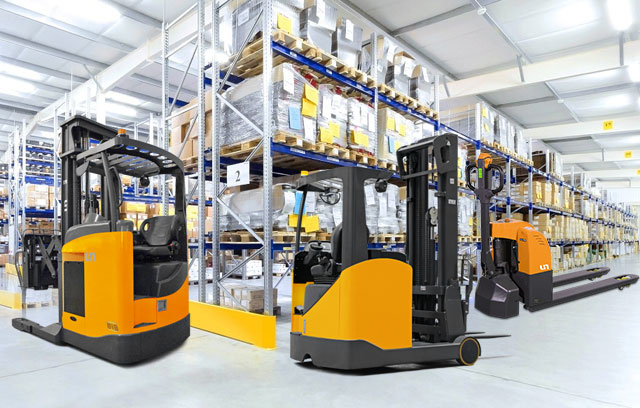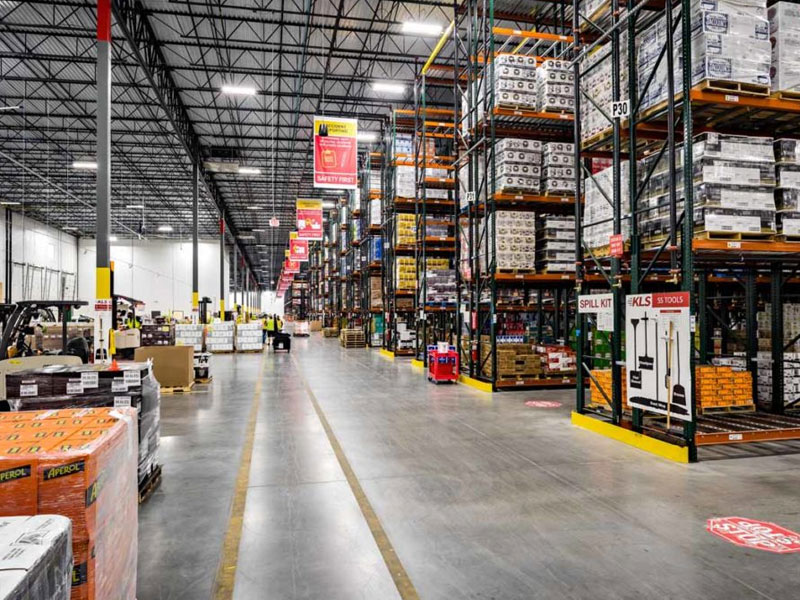The battery’s performance must fit the actual use of the forklift or lift truck. Sometimes the same trucks are used in different ways (handling different loads, for example) in the same facility. In this case you may need different batteries for them. Your corporate policies and standards may also be in play.
1. Load weight, lift height and travel distance
The heavier the load, the higher the lift, and the longer the route, the more battery capacity you will require to last the whole day. Take into consideration the average and maximum weight of the load, travel distance, height of the lift, and ramps. The most demanding applications, such as paper and packaging or food and beverage, where load weight can reach 15–20 thousand pounds, will require an 80V POWER Series lithium battery with up to 1050Ah capacity.
2. Forklift attachments
As with the load weight, the size of the pallet, or the shape of the load that needs to be moved, using heavy forklift attachments will require more “gas in the tank”—higher battery capacity. A hydraulic paper clamp is a good example of an attachment for which you need to plan some extra power.
3. Freezer or cooler
Will a forklift operate in a cooler or freezer? For low-temperature operations, you’ll probably need to choose a forklift battery equipped with additional insulation and heating elements, like the FROST Series lithium battery.
4. Charging schedule and speed: LFP and NMC Li-ion vs lead-acid battery
Single battery operation eliminates the need to replace a dead battery with a fresh one during the workday. In most cases, this is only possible with opportunity charging of a Li-ion battery during breaks, when it is convenient for the operator and does not disrupt the production process. Several 15-minute breaks during the day are enough to keep the lithium battery at over 40% charge. This is a recommended charging mode that provides top performance for a forklift and helps to extend the useful life of the battery.
5. Data for fleet management needs
Fleet management data is primarily used to track maintenance, improve safety compliance, and maximize equipment utilization. Battery management system (BMS) data can significantly enrich or replace data from other sources with detailed info on power consumption, the timing of charging and idle events, battery technical parameters, etc.
Easy data access and the user interface are becoming the most important factors when choosing a battery.
6. Corporate safety and sustainable development standards
Li-ion batteries are the safest option for industrial forklifts. They don’t have any of the issues of lead-acid technology, such as corrosion and sulfating, and do not emit any pollutants. They eliminate the risk of accidents associated with the daily replacement of heavy batteries. This benefit is crucial in industries such as food and beverage, medical supplies, electronics, etc. With Li-ion electric forklift batteries, you do not need a special ventilated room for charging.











 中文简体
中文简体 عربى
عربى Español
Español














